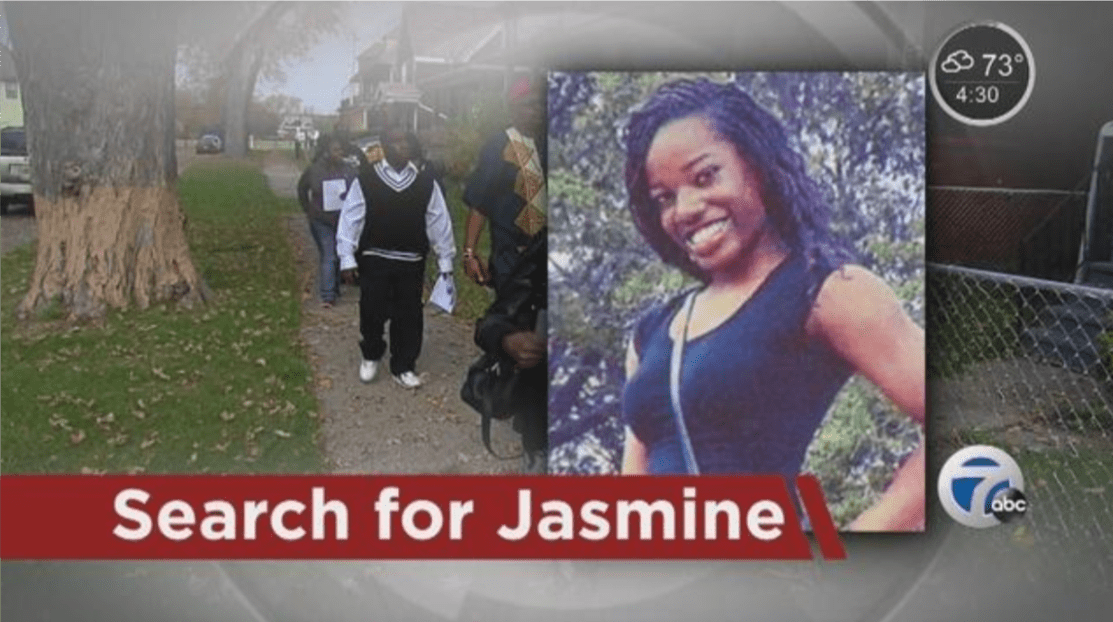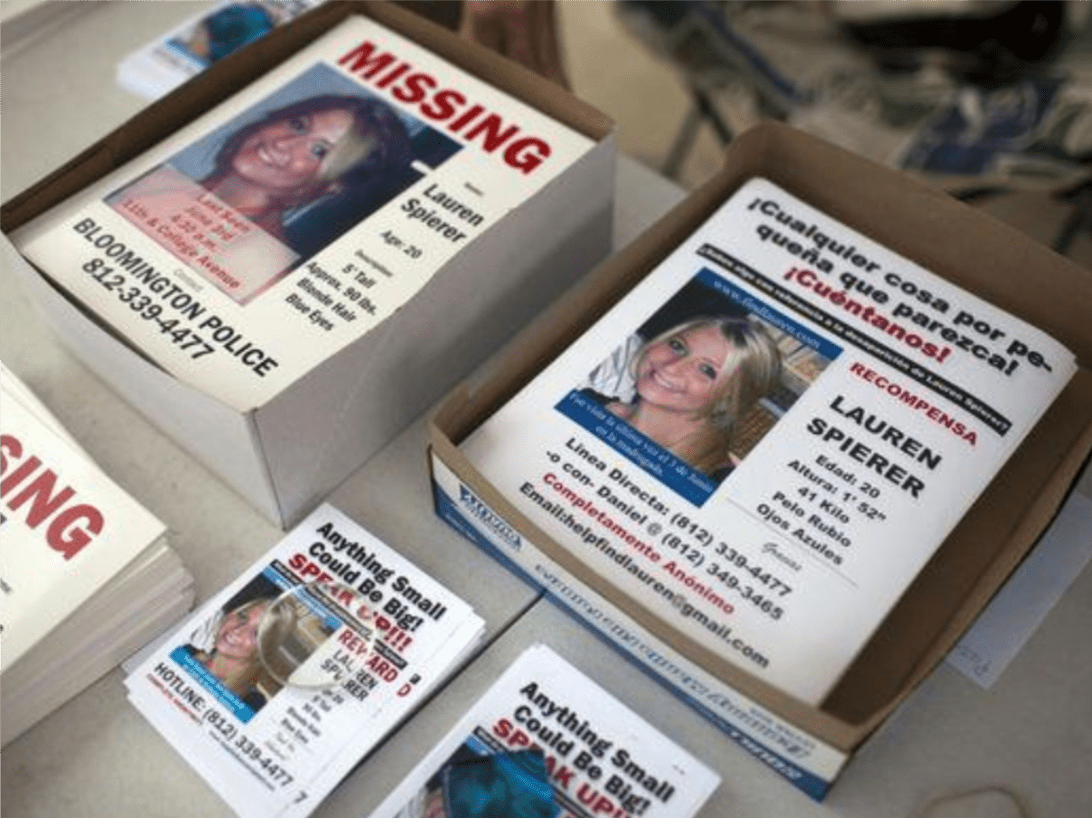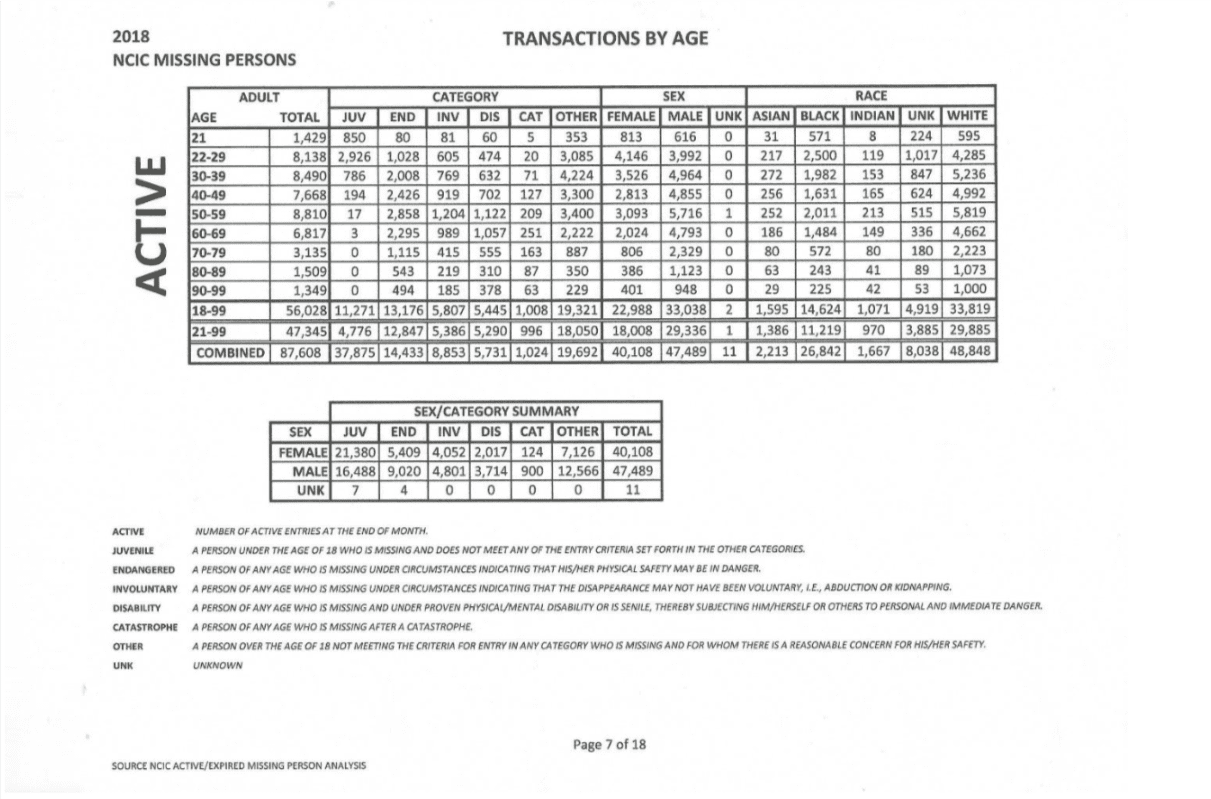
by admin_lauth | Oct 19, 2018 | Corporate Investigations, Harassment & Discrimination Evergreen, Investigations, Resources, Tips & Facts

Employee misconduct in the workplace can have a toxic effect on morale and productivity, which often incentivizes employers to resolve the situation quickly. These days, there are clear benefits to getting out in front of any misconduct complaint as movements like #MeToo have employers scrambling to vet their workforce so they can identify predators before scandal or evidence of misconduct can become public. In a surveillance culture where both bad behavior and good behavior are fodder for a good viral news story, employers everywhere are starting to understand the value in properly handling a corporate crisis. But in their haste to resolve the situation, are employers handling internal investigations properly?
Regardless of the type of business and type of misconduct, (sexual harassment, drug-trafficking, theft, etc.) the first instinct where there is a whiff of employee misconduct is often to keep the information very close to executives. As with any investigation, the controlled release of information has an investigative advantage in identifying the true culprits of any misconduct. This is the beginning of employers remaining too close to the situation. It’s not unusual for a well-meaning employer to appoint themselves as the head of the investigation—but this presents a huge conflict of interest. As a person with a great deal to lose, the employer is, by their very nature, biased and an unbiased investigation is the foundation for anything built on an employee complaint. Without the use of an external investigator, the case loses integrity.
 Hiring an external investigator, like a licensed private investigator, will bring a flattering layer of transparency to any workplace investigation. First and foremost, a private investigator is an independent third-party. Having no personal knowledge of the employees involved—and therefore having no preconceived notions about them—means they can truly approach the case from an indisputable place of objectivity. The employer’s personal knowledge of their employees disqualifies them from such objectivity. Whatever the misconduct du jour, they might never suspect their trusted personal assistant, their senior manager, or their business partner—all individuals with extensive access to company information and property. However, a private investigator will vet this list of possible suspects in search of the truth.
Hiring an external investigator, like a licensed private investigator, will bring a flattering layer of transparency to any workplace investigation. First and foremost, a private investigator is an independent third-party. Having no personal knowledge of the employees involved—and therefore having no preconceived notions about them—means they can truly approach the case from an indisputable place of objectivity. The employer’s personal knowledge of their employees disqualifies them from such objectivity. Whatever the misconduct du jour, they might never suspect their trusted personal assistant, their senior manager, or their business partner—all individuals with extensive access to company information and property. However, a private investigator will vet this list of possible suspects in search of the truth.
When an employer is unsure of how to proceed when investigating workplace misconduct, it seems like a no-nonsense solution to let the lawyers handle it. And it can often make sense, as they will be fielding any litigation that surfaces. In-house counsel might feel it’s under their purview for the same reasons, but this is very misguided. The lines of their capacities as both in-house counsel and investigator cross one another, thus creating another conflict of interest. While there are states like New York that allow attorneys to act as private investigators without a license to do so, this is still not recommended. Witnesses within the company will likely have anxiety about speaking to the company’s lawyer, and might not be as forthcoming with pertinent details. Leads suddenly begin pancaking into dead ends as nervous employees become less cooperative. Private investigators have the advantage in this situation, as they are not representatives of the individual’s employers in any capacity, and have no power to fire them. It’s the same advantage private investigators have over law enforcement because they have no powers of arrest.
The documentation provided by a private investigator is invaluable to workplace investigations. After all, many reports not handled to the satisfaction of the complainant often lead to legal action, the most common example being the more familiar story of sexual harassment in the workplace: An employee alleges sexual misconduct against another employee. Both parties are interviewed. The interviewer does not tape the interview nor take notes. After a shoddy investigation, the complainant decides to sue the company for negligence. Another common example is the case of an employee who is hastily terminated for FMLA abuse or malingering before the company conducts a thorough investigation.
Not only are paper and ink expensive, but filling out and preparing reports is time-consuming—time that would be better spent trying to improve your business. Private investigators keep meticulous records, just like law enforcement, of all witness statements, evidence, surveillance, and relevant information to the case. This will go a long way towards addressing the complaint after the PI has issued their solution. It’s a perfect package: The investigation is chronicled from beginning to end, all of the relevant information is accessible, and best of all, it was conducted, prepared, and presented by a completely objective, independent third-party. The same third-party can also offer testimony in any court case that might result from the investigation.
Whether you’re investigating sexual harassment allegations, drug-trafficking, theft, or any complaint of employee misconduct, make the proactive choice of hiring a private investigator. It’s the strongest first step you can take in any internal workplace investigation. From the beginning, the investigator will be an impartial, unbiased eye whose only loyalty is to the truth. This kind of due-diligence will go a long way towards demonstrating you, as an employer, have heard the complaint, taken it seriously, and are only interested in what actually occurred. The solution will not be based on pre-conceived notions of colleagues, or biased assumptions, but independent deduction and well-documented evidence. And even if the investigation comes to a less than amiable termination, the foundation laid by the private investigator will protect your business from litigation.

by admin_lauth | Aug 28, 2018 | Investigations, Missing Person, News and Media, Tips & Facts
If you are a missing person, it helps to be white

(Jasmine Moody vanished in Detroit, Michigan on December 4, 2014.)
Jasmine Moody, a 22-year old Texas Women’s University student mysteriously vanished on December 4, 2014, while visiting a friend in Detroit, Michigan. Nearly four years later, police are no closer to figuring out what happened to her. News coverage of her disappearance has long since vanished from the scene too.
Approximately 7:30 p.m., the evening of December 4th, Jasmine was last seen leaving her friend’s home in the vicinity of the 3700 block of Baldwin, in the Van Dyke and Mack area of Detroit. Her family, who lives in Texas, is convinced foul play is involved in Jasmine’s disappearance and disappointed in the police department’s response and ensuing investigation.
“My daughter was real popular. She had a lot of friends. She was very social and energetic,” Jasmine’s mother Lisa Kidd told Dateline. “She always had a smile on her face. Always, always.”
Jasmine had known she wanted to be a nurse since she was 16 and described as a well-rounded student at Texas Woman’s University. According to her stepfather Patrick Kidd, Jasmine was a straight-A student, danced, and was training to be part of the U.S. Armed Forces through her school’s ROTC program.
According to police, Jasmine had developed an online relationship with Brittany Gurley, a woman who lived in Detroit. Just a few months after meeting online, Jasmine and Brittany had developed a strong friendship and Jasmine flew to visit Brittany and her family for Thanksgiving.
On the evening of December 4th, the two women allegedly got into an argument about Jasmine’s social media posts. Brittany and her family would later tell police that Jasmine put on a hoodie and walked out of the house.
Little else is known about her disappearance. No major ground search was conducted, and ongoing media exposure on a national level has been minimal.
 In contrast to Jasmine Moody’s case, Lauren Spierer, a 20-year old student at Indiana University, vanished June 3, 2011, after an evening out with friends in Bloomington, Indiana. Lauren, who grew up in Scarsdale, an affluent town in Westchester, New York. Her disappearance quickly garnered national press attention but remains unsolved.
In contrast to Jasmine Moody’s case, Lauren Spierer, a 20-year old student at Indiana University, vanished June 3, 2011, after an evening out with friends in Bloomington, Indiana. Lauren, who grew up in Scarsdale, an affluent town in Westchester, New York. Her disappearance quickly garnered national press attention but remains unsolved.
“Lauren’s disappearance has been and continues to be the most heart-wrenching experience of our lives,” Lauren’s family posted on Facebook on June 4, 2018, seven years after her disappearance. “I remember writing a few short months after Lauren’s disappearance that I never thought I would see an October without answers. I could never have imagined we would still be searching for Lauren seven years later. I end this now as I start each morning, hoping today will be the day.”
After an evening out at Kilroy’s Sports Bar with friends, Lauren was last seen on 11th Street and College Avenue in Bloomington at approximately 4:15 a.m. She had left her cell phone and shoes at the bar, presumedly taking her shoes off in the beach-themed bar’s sand-filled courtyard.
National news quickly began covering Lauren’s disappearance while hundreds of volunteers assembled to distribute thousands of fliers and help conduct ground searches of the area. A billboard overlooking the Indiana State Fairgrounds, along Fall Creek Parkway, asks the public for any information that would lead to the whereabouts of Lauren.

(Thousands of flyers of missing person Lauren Spierer have been distributed throughout the country.)
Hundreds of volunteers continued to turn out daily to help the family in their search.
Lauren’s case was profiled on popular America’s Most Wanted in 2011, leading to dozens of leads but not that one the family needed. Over the years, dozens of news media outlets have covered Lauren’s story.
Early on, Lauren’s parents hired private investigators and today, maintain an active Facebook group.
In one very revealing and heartfelt post, Lauren’s mother writes, “I could not have imagined on June 3, 2011, that my life would ever have any semblance of normalcy. Unfortunately, that word will never be applied to our lives. You learn to live with routines which get you through your days, weeks, months, and years. We will never know normal. Some of the things taken for granted in ordinary families are so far removed from ours it’s difficult to fathom. They range from everyday life events, a wedding, a birth and yes sadly death. What I wouldn’t do to hear Lauren’s voice or even just to notice a text on my phone. Something so simple as a text. My heart breaks at the thought of it. Well, those responsible will never be able to imagine. I have said it before and I know it’s redundant but what could have been an accident in a few short hours became a crime. The worst nightmare any parent or sister could imagine.”
Every day Lauren’s family simply hopes for answers. That’s all any family of a missing person could ask for.
Two young women, one black, one white, both ambitious students couldn’t be treated more differently by the media. One becomes nearly a household name, the other nearly forgotten. With absolute certainty, no one can say exactly why.
What are the numbers?
As of May 31, 2018, there were 87,608 active missing person cases in the National Crime Information Center (NCIC) database at the Federal Bureau of Investigation. Of the active missing person cases listed in NCIC, 40,108 cases are of missing women and 26,842 are black.

(National Crime Information Center Report)
Names like Chandra Levy, Laci Peterson, Elizabeth Smart, Polly Klaas, Natalee Holloway and Lauren Spierer have become familiar household names. Their missing person cases have dominated the headlines over the years. Cases like Jasmine Moody’s are not rare and unfortunately rarely make the local news.
Historically, whenever a female missing person becomes a national headline, she is almost certain to be a pretty, young white woman.
When was the last time you heard of a missing black female on CNN or other national news outlets?
In an NBC news story “Damsels in Distress” Roy Peter Clark, head of Poynter Institute for Media Studies is quoted, “It’s all about sex,” said Clark. “Young white women give editors and television producers what they want.”
“There are several common threads,” said Clark. “The victims that get the most coverage are female rather than male. They are white, in general, rather than young people of color. They are at least middle class, if not upper middle class.”
Some say the cases fit a narrative pattern that storytellers have used for more than a century, a pattern who design still incorporates remnants of an outmoded view of women and black people and their roles in society.
When it comes to popular stories, Clark said, “there is this perverted, racist view of the world. White is good; black is bad. Blonde is good; dark is bad. Young is good; old is bad. And I think we can find versions of this story going back to the tabloid wars of more than a hundred years ago.”
Regardless of class, color or age, it is clear that there is disproportionate coverage of black missing person cases. Referred to as “Missing White Woman Syndrome” and has led to a number of tough on crime measures named after white women who disappeared such as Suzanne’s Law, Kristen’s Law, Jennifer’s Law, Amber Alert and others.
In a study conducted by Baylor University, “The Invisible Damsel: Differences in How National Media Outlets Framed the Coverage of Missing Black and White Women in the Mid-2000s,” Professors Moody, Dorris and Blackwell concluded that in addition to race and class, factors such as supposed attractiveness, body size, and youthfulness function as unfair criteria in determining newsworthiness in the national news coverage of missing women. In addition, news coverage of missing black women was more likely to focus on the victim’s problems, such as abusive relationships, a troubled past, while coverage of white women tends to focus on roles as mothers or daughters.
Zach Somers, a sociologist at Northwestern University, noted that while there has been extensive research that shows that white people are more likely than people of color to appear in news coverage as victims of violent crime, there is relatively none when it comes to missing person cases.
Victim blaming appears to be compounding the unequal coverage and reinforces the view that black female victims are not only less innocent, but less worthy of rescue relative to white women. Thus, the term “Damsels in Distress.”
Others have blamed “police brutality” for the lack of publicity given to black female missing persons, attributing the silence to a habit of “sexism and patriarchy” in American society.

One group is fighting the imbalance of national media exposure that exists. The Black and Missing Foundation’s mission is to draw more attention to missing African Americans by providing an outlet for spreading the word through technology and print – and their work is making a difference.
By creating relationships with the media, government agencies, and the public, they are increasing the chances of missing black women being covered in the news and ultimately, to bring them home.
Derica and Natalie Wilson, two sisters-in-law, and founders of the Black and Missing Foundation have been profiled in People Magazine, Essence, Ebony, Huffington Post, Washington Post and developed a partnership with TV One. This year they celebrate ten years, helping thousands of families of missing persons and finding nearly 300 people.
“Many times, we are a family’s last resort – their last hope., says co-founder Natalie Wilson. This platform allows us to open our doors for families searching for their missing loved ones and not restrict access to help.”
Black and Missing Foundation have set the example for other groups to follow, especially the media.
Thomas Lauth of Lauth Missing Persons: an Expert in Missing Children and Adults noted, “In the 17 years of conducting missing persons cases for families and non-profit organizations, there is certainly a media and public bias against a missing person of color. When the general public and the media see a blonde 18 year-old on CNN that is missing–as opposed to an African American female on CNN–there is immediate attention to the blonde. Luckily there are non profit organizations such as Black and Missing to help bring more exposure to advocacy to the families for persons of color.”
Finding missing persons is a cooperative effort between the police, media, social service agencies and especially the public. With every news story, the coverage generates leads and increases the chance of that one lead being reported that will assist law enforcement in the investigation, and even close a case.
When it comes to missing persons there is no black and white, there are only families who are missing their daughters, siblings missing their sisters, children who are missing their mothers. There is no rich or poor, only families, human beings experiencing the most traumatic experience of their lifetimes.
People . . . who need our help.
For more of Kym Pasqualini’s work in missing persons, please visit her website, Missing Leads , or log on to Facebook and join the conversation on the Missing Leads Discusssion page!

by admin_lauth | Aug 23, 2018 | Corporate Investigations, Fraud, Investigations, Resources, Tips & Facts, Workplace

Using a CNC to protect your business means the peace of mind that your trade secrets are safe.
If you own your own business, you know finding the right people to build your company is vital. One “weak link in the chain,” as they say, can tear a business down to its foundation. And as such, it’s not only important to hire the right people, but also protect your business from being exploited in the event a former employee might expose trade secrets. If it is your business’ practice to require a signature of an employee on a covenant not to compete, you should consider having a private investigator on retainer in order to vet any suspicions of non-compete violations.
Often referred to as a non-compete clause, a covenant not to compete or CNC is designed to protect an employer’s business against future competition or theft of trade secrets by a former employee. In essence, the CNC prevents a former employee, terminated or otherwise, from using a business’ trade secrets to either work for or start a rival business. Violators of CNC have an intimate knowledge of a particular business and can use that information to destroy it. In addition to exploiting the successes of a company by using the same strategies, a violator uses their knowledge to exploit the weaknesses of a company. They know where the vulnerable spots are in their business model, and violators can correct this process in the rival business, as well as, target their former employer in advertisements.
These legal contracts have a history going back as far as the 15th century, when English common law refused to enforce the Renaissance-era CNCs on the grounds they would place too many restrictions on trade. There have been many arguments made CNCs also interfere with America’s capitalist economy, placing restraints on the free-market standards in the United States. There are only a few states in the union completely prohibiting the use of non-competes, including California, Montana, North Dakota, and Oklahoma. One of the industries where CNCs are most common is the media. Most media-conglomerates force employees to sign CNCs at the time of hire to prevent them from sharing delicate information about media markets upon leaving their position. Another common industry is finance, especially Wall Street, where a person can literally be indicted for knowing too much, having been charged with insider-trading. Many might remember reading about CNCs back in 2005, when Microsoft and Google took a former employee, Kai-Fu Lee, to task by enforcing his CNC after leaving the company. CNCs are everywhere, and as such, businesses would be wise to employ external investigators to get the hard facts on CNC violations.
As was the case with FMLA fraud violations within a company, having an external investigator—like a PI—on retainer, will allow the company to protect itself in the event they believe a former employee has violated their CNC. The fallout from CNC violations can be ugly, with former employees insisting, not only did they not violate their CNC, but also they are being persecuted by their former employer. A private investigator is a third-party, which means they are well within their means to be objective. A private investigator’s loyalty is to the truth, as such, you can rely on cold-hard facts to bolster a case against a CNC violator. This objectivity comes in handy during litigation when enforcing a CNC.
The former employee cannot claim their employer is biased in their fact-finding, because they did not conduct the investigation. While a business can sue a former employee for violation of a CNC, it is not a criminal matter, so a business cannot ask law enforcement to investigate. Luckily, private investigators often have a resume bearing similar experience to law enforcement, as well as ,a very similar set of tools to find answers. They can locate witnesses, witness statements, videotapes, photographs, and acquire documents to build a prima facia case against a CNC violator. Whatever the circumstances, having an objective external investigator on retainer will provide businesses with the assurance they have conducted all necessary steps to safeguard their company.

by admin_lauth | Aug 7, 2018 | Corporate Investigations, FMLA Fraud Evergreen, FMLA Investigations, Fraud, Insurance Fraud, Investigations, Theft, Tips & Facts, Workplace

FMLA fraud can devastate a company, but companies should protect the integrity of their investigations to protect themselves.
The Family and Medical Leave Act (FMLA) provides working families balance to their lives when their circumstances take a turn. Whether it’s caring for new life in the household—such as a newborn or a foster child—or to care for an ailing relative, the 1993 act protects employees from being terminated from their jobs when they must take an extended absence for a specific set of reasons. However, abuses of FMLA are extremely common in the American workforce. While suspicions of FMLA abuse should be taken seriously by employers, companies must conduct thorough and unbiased investigations before terminating any employees. Businesses who do not follow protocol can open themselves up to expensive litigation.
In addition to protecting employees from termination during an extended leave, FMLA also requires their various insurance coverage remain in effect. This protection can be guaranteed for up to 12 weeks. According to the Department of Labor:
FMLA is designed to help employees balance their work and family responsibilities by allowing them to take reasonable unpaid leave for certain family and medical reasons. It also seeks to accommodate the legitimate interests of employers and promote equal employment opportunity for men and women.
FMLA applies to all public agencies, all public and private elementary and secondary schools, and companies with 50 or more employees. These employers must provide an eligible employee with up to 12 weeks of unpaid leave each year for any of the following reasons:
- the birth and care of the newborn child of an employee;
- placement with the employee of a child for adoption or foster care;
- to care for an immediate family member (spouse, child, or parent) with a serious health condition; or
- medical leave when the employee is unable to work because of a serious health condition.
The use of FMLA within these guidelines (with some exceptions) is designed to protect hard-working men and women from losing their jobs when their family suddenly requires their attention. Life can change so fast, and employees can rest easy knowing their jobs will be waiting for them when they are able to return in top-performing condition.
According to Charlie Plumb, an attorney who represents clients in all phases of management, abuse of this protection should be investigated, provided the employer has an “honest suspicion.” He goes on to say, “This honest suspicion standard is really intended to protect the employer against a claim they are interfering against FMLA leave and/or being retaliatory.”
A familiar scenario is one where an employee has been granted leave under FMLA for a serious illness or injury. The employer then happens to see posts from the employee on social media having fun out with friends, exercising, or driving. The employer might think, “If they’re well enough to do these things, they must be well enough to work.” While this might sound like an open and shut case from the employer’s point of view, Allen Smith of The Society of Human Resources Management, provides an example where this philosophy proved problematic:
“Joan Casciari, an attorney with Seyfarth Shaw in Chicago, said she handled a case that involved an employee who was put on FMLA leave for depression. The employer later discovered, through surveillance, she was doing Christmas shopping with her family and having a wonderful time. But her doctor confirmed “retail therapy” was consistent with her condition and the fact she could shop did not mean she did not require FMLA leave.”
Luckily for the employer in this anecdote, they did their due diligence and consulted a medical professional who could corroborate the circumstances of her FMLA qualifications. Some employers are far hastier. When employers do not conduct comprehensive and objective investigations into suspicious FMLA claims, they can open themselves up to lawsuits that can be devastatingly expensive and a public relations nightmare.
Vigilance of adherence to the guidelines of FMLA becomes manageable when Human Resource directors keep an eye out for certain patterns of behavior, such as absence patterns, especially when they coincide with non-work events (holidays or something personal that they may have mentioned in the past). Employers should also be suspicious of absences directly contradicting any medical certification in frequency or duration.
Once an employer has a reasonable suspicion of FMLA abuse, they should most certainly investigate. However, internal investigations into these kinds of abuses can be very messy for Human Resources and upper management. The aforementioned scenario involving “retail therapy” could have been a disaster if the company had not done their due diligence. Some employers are not so diligent.
Another scenario involving a maintenance worker at a nursing home and rehabilitation center panned out much differently. The employee in question noticed his superior was exhibiting a pattern of absence he found suspicious. He began reviewing surveillance footage to compare to his own personal log of her comings and goings in order to prove she was abusing company time. After discovering the independent investigation, the superior served a series of performance adjustments to the employee before terminating him. The termination came after the employee had submitted an FMLA request. The court found the dates of his termination tied in too closely with his request for FMLA, allowing the employee to take the case to trial.
Scenarios like these are why Human Resources and management should 1) be vigilant of FMLA abuse, and 2) conduct a thorough and unbiased investigation in order to ensure the company is protected from litigation. Many companies choose to handle investigations internally in order to minimize the amount of exposure. However, internal investigations spearheaded by current members of staff, will not only disrupt daily operations, but can also have negative effects like the case of the nursing home. The employee conducting his own investigation may have had honest suspicions of his superior’s misconduct, but he was certainly not a unbiased source to investigate.
Private investigators are probative routes often overlooked when a company has an internal investigation. There are many circumstances under which companies do not want to give up control over an internal investigation, and a private investigator is the definition of a third-party. However, the objectivity of a private investigator is the number one reason why companies should consider them as an option. The personal biases of the persons involved in the previous examples caused the investigation to go south. As an independent contractor, a private investigator’s only loyalty is to the truth. They are vital to ensuring an investigation is a transparent expedition for the truth. This goes a long way towards protecting a business from subsequent lawsuits or bad press.
When handling an investigation internally, employers are limited to what surveillance they can attain from their own equipment or social media. Private investigators are licensed to track individuals and photograph their activity in public. Persons who fraudulently claim to be out for injury can be photographed doing tasks directly contradicting their FMLA claim, like yardwork or lifting heavy groceries. In addition to tracking their public movements, private investigators may also conduct undercover operations in order to investigate any frauds. They are invaluable in this regard as they are not known to those within the company. Whether you’re looking for an FMLA weekender or an FMLA moonlighter, if someone has made a fraudulent FMLA claim, a private investigator is the most-equipped professional to prove or disprove the suspicion.

 This suspension of protection services has allowed the beast of robo-calls to fester and become feral, as consumers cannot block or report harassing robo-calls. They’re left screaming into the void. Alex Quilici, the chief executive of YouMail—a smartphone application that helps consumers block robo-calls—describes it, “It’s a neighborhood with no police on the beat.” YouMail estimated, just last month, there were 5 billion robo-calls made, and 50% of calls made in early 2019 could be coming from scammers and robots attempting to fraudulently obtain your information. These horrifying statistics are the codas for a chorus of federal employees who are aware of the scope of the problem, like Jessica Rosenworcel, the Federal Communications Commission Commissioner, “The number of robo-calls consumers are receiving is insane. The problem just keeps growing. Shutting down the government is not going to help.” As of this moment, there is no one to administrate the “Do Not Call” list, the national registry in which consumers can ask specific companies not to contact them.
This suspension of protection services has allowed the beast of robo-calls to fester and become feral, as consumers cannot block or report harassing robo-calls. They’re left screaming into the void. Alex Quilici, the chief executive of YouMail—a smartphone application that helps consumers block robo-calls—describes it, “It’s a neighborhood with no police on the beat.” YouMail estimated, just last month, there were 5 billion robo-calls made, and 50% of calls made in early 2019 could be coming from scammers and robots attempting to fraudulently obtain your information. These horrifying statistics are the codas for a chorus of federal employees who are aware of the scope of the problem, like Jessica Rosenworcel, the Federal Communications Commission Commissioner, “The number of robo-calls consumers are receiving is insane. The problem just keeps growing. Shutting down the government is not going to help.” As of this moment, there is no one to administrate the “Do Not Call” list, the national registry in which consumers can ask specific companies not to contact them. 

 Hiring an external investigator, like a licensed private investigator, will bring a flattering layer of transparency to any workplace investigation. First and foremost, a private investigator is an independent third-party. Having no personal knowledge of the employees involved—and therefore having no preconceived notions about them—means they can truly approach the case from an indisputable place of objectivity. The employer’s personal knowledge of their employees
Hiring an external investigator, like a licensed private investigator, will bring a flattering layer of transparency to any workplace investigation. First and foremost, a private investigator is an independent third-party. Having no personal knowledge of the employees involved—and therefore having no preconceived notions about them—means they can truly approach the case from an indisputable place of objectivity. The employer’s personal knowledge of their employees 

 In contrast to Jasmine Moody’s case, Lauren Spierer, a 20-year old student at Indiana University, vanished June 3, 2011, after an evening out with friends in Bloomington, Indiana. Lauren, who grew up in Scarsdale, an affluent town in Westchester, New York. Her disappearance quickly garnered national press attention but remains unsolved.
In contrast to Jasmine Moody’s case, Lauren Spierer, a 20-year old student at Indiana University, vanished June 3, 2011, after an evening out with friends in Bloomington, Indiana. Lauren, who grew up in Scarsdale, an affluent town in Westchester, New York. Her disappearance quickly garnered national press attention but remains unsolved.





